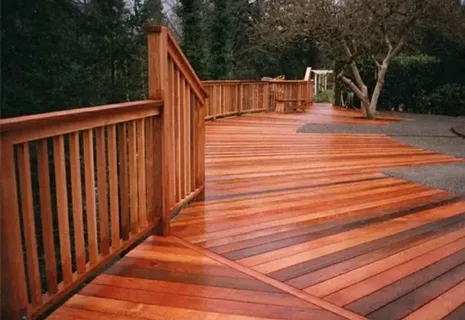Painting your deck or fence might seem like a straightforward weekend project. With a brush in hand and a couple of paint cans, you’re ready to refresh your outdoor space. But before you dive in, it’s important to understand that deck and fence painting requires more than just enthusiasm. Skipping key steps like surface preparation or using the wrong type of paint can lead to peeling, uneven coverage, and expensive repairs later on.
In Orlando FL, where humidity and sun exposure can take a toll on outdoor wood, proper painting techniques are even more critical. Choosing the right materials and following a professional process helps ensure a durable, weather-resistant finish that holds up through the hot summers and occasional tropical storms. Taking the time to do it right—or hiring a professional who knows the local climate—can make all the difference in how long your paint job lasts.
In this post, we’ll break down the top seven mistakes homeowners often make when tackling deck and fence painting, and how to avoid them for a flawless, long-lasting finish.
1. Skipping Surface Preparation
The biggest mistake? Not properly preparing the surface before painting. Dirt, mildew, old paint, and moisture can all prevent new paint from adhering properly. If you don’t clean and sand your deck or fence thoroughly, expect premature peeling and flaking.
Solution: Use a power washer or scrub the surface with a deck cleaner. Let the wood dry completely, then sand any rough or peeling areas. This step ensures better adhesion and a smoother finish.
2. Painting on Damp Wood
Moisture is the enemy of a successful paint job. If the wood isn’t completely dry, the paint will trap moisture inside—leading to blistering, cracking, or even mold growth.
Solution: Wait at least 24–48 hours after washing before painting. Use a moisture meter if needed. The moisture level should be below 15% for optimal results.
3. Using the Wrong Paint or Stain
Decks and fences are exposed to UV rays, rain, humidity, and temperature swings. Indoor paints won’t hold up in such conditions, and even outdoor paint must be specifically formulated for wood.
Solution: Choose high-quality exterior paints or stains made for decks and fences. Consider whether you want a transparent stain to highlight the grain or a solid color for more coverage and UV protection.
4. Not Priming Bare Wood
While some paints claim to be paint-and-primer in one, skipping primer on bare or old wood can cause the finish to soak in unevenly, leading to blotchy spots.
Solution: Apply a wood primer designed for exterior surfaces before painting. This helps the paint stick better and improves durability.
5. Painting in Extreme Weather Conditions
Painting in direct sunlight or when temperatures are too hot or cold can affect the way paint cures. Humid days can also interfere with drying time, leading to a tacky or uneven finish.
Solution: Aim for a day with mild, dry weather—ideally between 50°F and 85°F with low humidity. Overcast days are ideal for preventing premature drying.
6. Applying Too Much Paint at Once
It’s tempting to apply a thick coat of paint to speed things up, but this often leads to drips, pooling, and longer drying times. Heavy coats are more prone to peeling as well.
Solution: Apply thin, even coats using a brush or roller. Allow each coat to dry fully before applying the next. It might take a little longer, but the end result will be cleaner and more durable.
7. Neglecting Maintenance After Painting
Many people assume their job is done once the last brush stroke dries. But even high-quality paint won’t last forever without routine care.
Solution: Inspect your deck and fence annually. Touch up any chipped areas, clean off debris, and reapply paint or stain every few years as needed. Routine maintenance preserves the look and extends the life of your wood surfaces.
Final Thoughts
Deck and fence painting can enhance your home’s curb appeal, protect your investment, and create a welcoming outdoor space—but only if done correctly. Avoiding these common mistakes will save you time, money, and frustration in the long run. When in doubt, or if your deck or fence has significant damage, consider hiring a professional to get the job done right.
FAQs
- How often should I repaint my deck or fence?
Most decks and fences need repainting every 2–5 years depending on climate, sun exposure, and the type of paint used. - Should I use paint or stain for my deck and fence?
Stain is typically better for decks because it soaks into the wood and withstands foot traffic. Paint offers more color options and coverage but may peel over time. - What tools do I need for painting a deck or fence?
You’ll need a power washer, sander, paintbrushes, rollers, exterior primer, and paint or stain. Drop cloths and painter’s tape are also helpful. - Can I paint over old paint without sanding?
It’s not recommended. Sanding removes loose paint and creates a better surface for the new paint to stick to. - Is it cheaper to paint a deck myself or hire a professional?
DIY is cheaper upfront, but hiring a pro may save you money in the long run by ensuring the job is done right the first time.












































